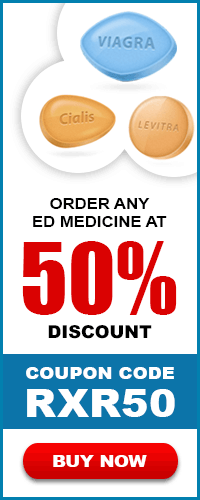Generic Name: Measles, mumps, and rubella (MMR) vaccine (MEE zels, MUMPS, and roo BEL a)
Brand Name: M-M-R II
Form: Subcutaneous powder for injection
Measles, mumps, and rubella are deliberate diseases caused due to viruses. They varies from person to person through the medium of air. Measles virus may result in some minor symptoms such as skin rash, cough, runny nose, eye irritation, or mild fever. It can also result in some serious symptoms which are ear infection, pneumonia, seizures, permanent brain damage, or death. Mumps virus result in fever, headache, and swollen glands, but more serious symptoms include hearing loss, and painful swelling of the testicles or ovaries. Mumps can cause some major breathing problems or meningitis, and these infections may be fatal in nature. Rubella virus which are also known as German Measles causes skin rash, mild fever, and joint pain. Suffering from rubella during pregnancy can lead in a miscarriage or serious birth defects in infant. The measles, mumps, and rubella vaccine is consumed to help avert these diseases in children and adults too.
This vaccine works by revealing you to a small dose of the virus or protein from the virus, which results the body to evolve amnesty to disease. This vaccine will not deal with active infection that has already advanced in body. Measles, mumps, and rubella vaccine is majorly used for children aged between 12 months and 6 years old, whereas in adults who have never earned vaccine or had the diseases. Like any vaccine, this vaccine may also not provide protection from disease in every person.
Drug Description:
M-M-R II is a sterile lyophilized preparation of Attenuvax (Measles Virus Vaccine Live), a higher constricted line of measles virus, obtained from Enders' deliberated Edmonston bruise and inseminate in chick embryo cell culture; Mumpsvax (Mumps Virus Vaccine Live), the Jeryl Lynn(B level) strain of mumps virus inseminate in chick embryo cell culture; and Meruvax II (Rubella Virus Vaccine Live), the Wistar RA 27/3 strain of live weaken rubella virus propagated in WI-38 human diploid lung fibroblasts.1,2
Composition of the Drug:
When reconstituted with the sterile diluent provided, each 0.5 mL dose of M-M-R II contains:
|
Active Ingredients |
Quantity/Dose |
|
Measles virus |
≥1000 CCID50 |
|
Mumps virus |
≥20,000 CCID50 |
|
Rubella virus |
≥1000 CCID50 |
|
Inactive Ingredients |
|
|
Sodium Phosphate, Monobasic |
3.1 mg |
|
Sodium Phosphate, Dibasic |
2.2 mg |
|
Sodium Bicarbonate |
0.5 mg |
|
Medium 199 |
3.3 mg |
|
Minimum Essential Medium, Eagle |
0.1 mg |
|
Neomycin |
25.0 μg |
|
Phenol Red |
3.4 μg |
|
Sorbitol |
14.5 mg |
|
Potassium Phosphate, Monobasic |
20.0 μg |
|
Potassium Phosphate, Dibasic |
30.0 μg |
|
Gelatin (Porcine) Hydrolyzed |
14.5 mg |
|
Sucrose |
1.9 mg |
|
Monosodium L-Glutamate |
20.0 μgt |
Indications:
M-M-R II is indicated for concurrent immunization against measles, mumps, and rubella in individuals 12 months of age or older.
Dosage:
Do not inject the formula intravascularly. The dose of the medication for any age is 0.5 mL which has to be administered subcutaneously, preferably into the outer aspect of the upper arm. The suggested age for primary vaccination is 12 to 15 months. Children first vaccinated when younger than 12 months of age should receive another dose between 12 to 15 months of their age before elementary school entry.
Missed Dose:
In case of missed dose, the next dose should be given as soon as possible. There is no need to start over. Be sure to receive all recommended doses of this vaccine. You may not be fully protected if you do not receive the full series.
Using Guide of the drug:
- This vaccine is given as an injection under the skin. You will receive this injection in a doctor's office or clinic setting.
- The measles, mumps, and rubella vaccine is injected in a series of shots. The first shot is usually given to a child who is 12 to 15 month old. The booster shots are then given between 4 and 6 years of age. At least 28 days (4 weeks) should be the time gap between the first and second doses of this vaccine.
- Keep this drug, as well as syringes and needles, away from children and pets. Avoid reusing needles, syringes, or other materials. Follow the guide book for disposal of the used material. Follow all local rules for disposal.
Storage:
To maintain potency, medication is to be stored between -58°F and +46°F (-50°C to +8°C). Use of dry ice may subject in temperatures colder than -58°F (-50°C). Store the vaccine away from light at all times, as this exposure may inactivate the viruses. Before restructuring, store the lyophilized vaccine at 36°F to 46°F (2°C to 8°C). The diluent may be stored in the refrigerator with the lyophilized vaccine or differently at room temperature. It is recommended that the vaccine be used as soon as possible after reconstitution. Store reconstituted vaccine in the vaccine vial in a dark place at 36°F to 46°F (2°C to 8°C) and discard if not used within 8 hours.
Side Effects:
Serious side effects caused due to this vaccine may include: problems with hearing or vision; extreme drowsiness, fainting; easy bruising or bleeding, unusual weakness; seizure (black-out or convulsions); or high fever (within a few hours or a few days after the vaccine). Less serious or common reactions/side effects include: redness, pain, swelling, or a lump at the injected place; headache, dizziness; low fever; joint or muscle pain; or nausea, vomiting, diarrhea.
Precautions:
General precautions which are to be taken while injecting vaccine are adequate treatment provisions, including epinephrine injection (1:1000), should be available for immediate use. If not it results in an anaphylactic or anaphylactoid reaction.
Pediatric Use precautions may include: Safety and effectiveness of this vaccine in infants below the age of 6 months have not been established, hence should be avoided. Safety and effectiveness of mumps and rubella vaccine in infants less than 12 months of age is not noticed and should be avoided.
Geriatric use precautions are clinical studies of vaccine did not built acceptable numbers of seronegative subjects aged 65 and over to regulate whether they respond differently from younger subjects.





